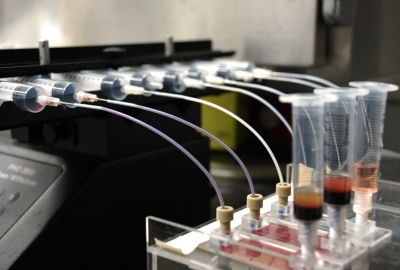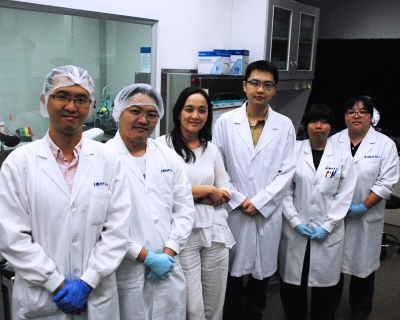Prior to Dr. Ying-Chih Chang’s joining Genomics Research Center back in 2004, she was a Chemical Engineering professor at University of California, Irvine. The idea of applying her training in Engineering to the Biotechnology field focusing on diseases was a brand new challenge to her.
Years later, she not only expanded into biological sciences, but also successfully developed a process/tool solution that presents a very promising diagnostic strategy in early detection of cancerous cells out of blood. Her innovative approach that could screen billions of blood cells to find one cancerous cell was spotted by a venture capital firm known for networking high-end investors in Silicon Valley. The technology has been successfully transferred to a start-up company CellMax Life. A unique cross-border setup was created so that the follow up medical screenings for validation and commercialization are conducted in US and Taiwan simultaneously. It is currently in operation in the Bio-Incubation Center of Academia Sinica, and Mountain View, California. The Wall Street Journal had a write up of this in an article in September 30, 2014.
Dr. Chang’s creation evolved from her interest in the lipids that surround the cell surface. What fascinates her is that there are two layers of lipid molecules covering a whole cell, and these lipid molecules change positions constantly due to their slippery nature. All cellto cell events happen as these lipid molecules reshuffle positions and form different shapes and chemical structures.
Circulating Tumor Cells, aka. CTCs is a research topic when scientists questioning when exactly cancer metastasis happens, and how we can find out in time when a few such run away cancer cells are floating inside patients’ blood.
In order to achieve that goal, Chang’s group has developed a nano material, having it coated inside of a specially designed chip-like device. When zooming to examine this chip, it is really a rectangular chamber with multiple channels built in. The surface of the walls and floor are carved with specially designed patterns.
 |
| A specially designed chip-like device |
At top of each long end, there is a pipe that allows fluids to come in from one end and be blown out at the other.
The coating contains antibodies for a certain cancerous cell type. When the blood is flushed in thru one end to the other, it is designed for the antibody to grab the cancerous cells, and let others pass by. According to Chang, this approach is not a new invention, however, others who tried it only found out the target cells were trapped but also damaged due to the shear stress.
 |
| Part of the prototype device which collects the cancerous cells |
The secret recipe of her biomimetic coating is ‘lipid’, and this coating is actually mimicking the cell membrane. By adding lipid to the material, it made the surface so slippery that almost nothing could stay unless the holding force is strong like a rooted tree. Actual test result showed not only fully intact cells were trapped, it also showed more cells being trapped at the flushing-in end of the chip, meaning the antibody strategy works well.
Now, they needed to collect these cells left behind and do a validation to see if these are really THE cancerous cells that they planned to catch. To do that, they came up with a tactic similar to bubble enhanced hydraulic fracturing technique used by chemical engineers in mining the shale oil. With air bubbles added, the lipid molecules on the coating react and flip, swap positions, and thus changed the binding force in between the antibody and the cell, and the trapped cells could be collected in merely three seconds!
To validate the clinical aspect of this platform, they teamed up with CGMH (Chang Gung Memorial Hospital). By actually examining colorectal cancer blood from 170 patients, there is a strong correlation in between the CTC counts and the disease progression stages.
What’s more astonishing is, as opposed to conventional thinking, early as stage 0 or stage1, when most doctors think the cancer cells are only at the original spot, it is proved there are run away cancer cells floating in the patient’s blood already. The percentage of such finding is a whopping 35%!
Another test with patients with polyps, it showed CTC counts increase as time goes by clearly.
With 1 c.c. blood there are one billion red blood cells in it, and Chang’s device has proved to be able to catch the cancer cells in single digit volume in it. The potential of this development being applied to therapeutics for varieties of diseases is exciting and promising.
 |
| Dr. Ying-Chih Chang's research team |